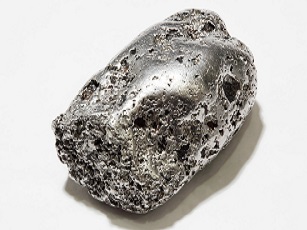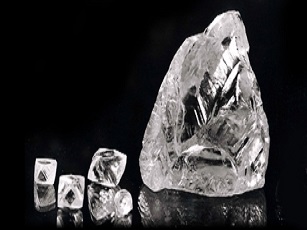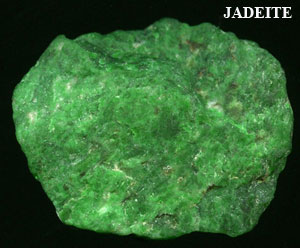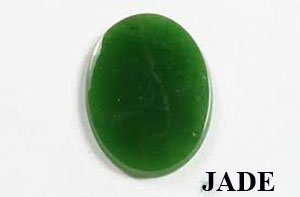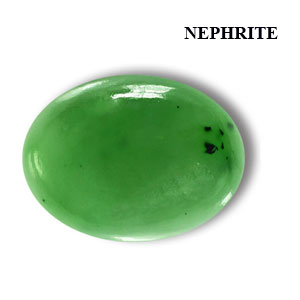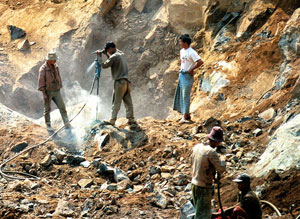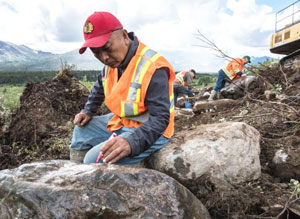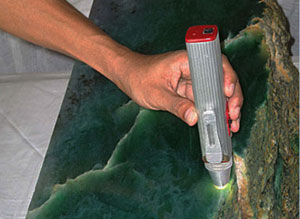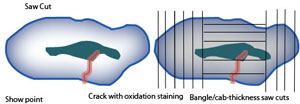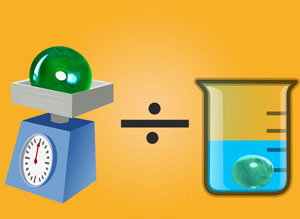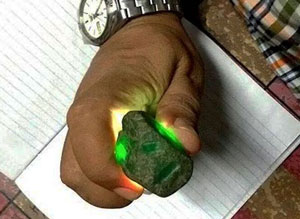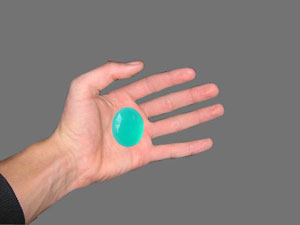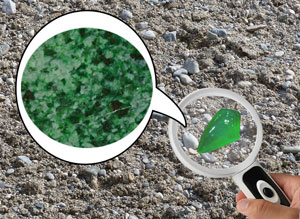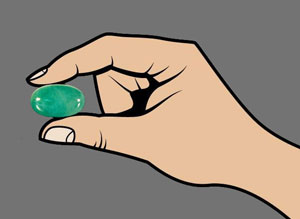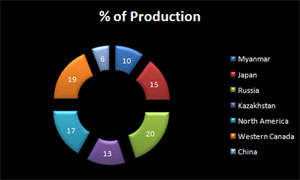JADEITE MINING
What is Jadeite Mining ?
Jadeite mining is the process of extracting jadeite, a valuable and highly prized form of jade, from the Earth's crust. Jadeite is a rare and highly sought-after gemstone known for its vibrant green color and is a symbol of beauty, harmony, and longevity in many cultures.
History of Jadeite
Jadeite was associated with virtue, beauty, longevity, and even immortality. It was often used to create burial suits for royalty and the elite, as it was believed to preserve the body and soul.Jadeite is a precious and revered gemstone with a rich history that spans cultures and civilizations across centuries.
Ancient Origins:
Jadeite, along with its cousin nephrite, has been used for thousands of years by ancient civilizations. Its origins can be traced back to ancient China, where it was considered the "Imperial Jade" and was highly prized by emperors and nobility.
China:
Jadeite has been associated with Chinese culture for over 7,000 years. It was highly valued for its beauty, rarity, and perceived mystical properties. Ancient Chinese civilizations carved jadeite into intricate shapes and used it for ceremonial, religious, and decorative purposes. It was believed to have protective and healing qualities.
Mesoamerica
In Mesoamerica, particularly among the Maya and Aztec civilizations, jadeite was highly prized and considered more valuable than gold. It held religious and ceremonial significance and was associated with power and prestige. Jadeite artifacts have been found in ancient Mayan tombs and ceremonial sites, highlighting its importance in their society.
Other Cultures
In ancient Egypt, jadeite was also highly regarded and was used for amulets, jewelry, and ceremonial objects. In ancient Southeast Asia, including present-day Myanmar (Burma), jadeite has a long history of usage and was highly prized by various cultures.
Modern Rediscovery and Trade
In the 18th and 19th centuries, Western explorers and traders rediscovered jadeite in Asia, particularly in Myanmar (formerly Burma). The demand for jadeite surged in Europe and the United States during this time.
Contemporary Jadeite Market
Today, jadeite remains highly sought after and is a symbol of prestige and luxury. The most prized and valuable jadeite often comes from Myanmar, which has the largest and highest-quality jadeite deposits in the world. The jadeite market has expanded globally, with demand coming from Asia, Europe, the Americas, and other regions. Fine jadeite jewelry, sculptures, and artifacts command high prices at auctions and in the luxury market.
Throughout history, jadeite has been revered not only for its beauty but also for its cultural, spiritual, and symbolic significance in various societies. Its allure and value persist to this day, making it one of the most coveted gemstones in the world.
Formula of Jadeite
Jadeite is a pyroxene mineral and is one of the two main types of pure jade, the other being nephrite. Its chemical composition is a complex aluminosilicate. The general chemical formula for jadeite is:
This formula indicates that jadeite primarily consists of sodium (Na), aluminum (Al), iron (Fe), silicon (Si), and oxygen (O). The ratio of aluminum to iron can vary, and other elements may also be present in trace amounts depending on the specific geological conditions where the jadeite is formed.
Difference Between two types pure jade
Jadeite and nephrite are totally different minerals. They have different densities, different hardness, different crystal structure, and different chemical compositions. There are certain differences as follows :
Mining of Jadeite
Jadeite mining is a specialized process that involves several steps to extract this valuable gemstone. It's predominantly conducted in regions known for jadeite deposits, such as Myanmar (Burma), Guatemala, and parts of China. Here's a detailed look at the process:
- Exploration and Site Identification
- Accessing the Jadeite Deposits
- Extracting Jadeite-Bearing Rocks
- Sorting and Evaluation
- Processing and Finishing
- Distribution and Market
- Ethical and Environmental Considerations
Geological Surveys: Geologists conduct surveys to identify potential areas with jadeite deposits. They study rock formations, geological structures, and mineral compositions. Remote Sensing Technologies: Advanced techniques like satellite imaging and LiDAR are used to detect potential jadeite-bearing formations from a distance.
Mine Development: Depending on the location and depth of the deposits, miners may create mineshafts, tunnels, or use open-pit mining methods. Extraction Methods: Extraction techniques range from manual labor using basic tools to mechanized processes involving heavy machinery for larger-scale operations.
Excavation: Miners extract the jadeite-bearing rocks from the earth. These rocks may contain other minerals and materials that need to be separated. Processing Raw Material: Once extracted, the raw material undergoes initial processing to break it down into smaller, manageable pieces.
Quality Assessment: Skilled workers sort and evaluate the raw jadeite based on various factors like color, transparency, texture, and potential market value. Categorization: Jadeite is categorized into different grades based on its quality and appearance. The most valuable jadeite typically exhibits vivid colors and high transparency.
Cutting and Polishing: Jadeite that meets certain quality standards may undergo cutting, shaping, and polishing to enhance its appearance and value. Treatment (optional): Some jadeite may undergo treatments to improve its color or clarity, although this is less common compared to other gemstones.
Market Channels: Processed jadeite is distributed through various channels to jewelers, collectors, and manufacturers. Global Trade: The gemstone enters the global market, with demand coming from various regions where jadeite holds cultural significance.
Sustainability: There are concerns about sustainable mining practices and environmental impact. Efforts are made in some regions to regulate mining activities and promote responsible practices. Community Impact: Mining communities may face social and economic challenges. Efforts are made to ensure fair labor practices and support local communities.
Cutting of Jadeite
The largest jadeite quarry measured about 50 yards in length by 40 broad and 20 deep. The bottom was flooded to a depth of a few feet. A careful watch must then be kept, in a tremendous heat, in order to detect the first signs of splitting. All this must be done when the stone is at its highest temperature, and the miners protect themselves from the fierce heat by fastening layers of plantain leaves round the exposed parts of their body. When we cut a jade, the surface is rough and granular.
We have to put some water on the surface to encourage how it looks like when we polish it. There are some greens but we cannot cut a decent piece from it. There are still a lot of unexposed parts and if we want to take it further we have to cut it wide open. Rough jadeite is often sold with an open window. Those stones which do not have any open windows can be expensive as even the seller has not the slightest idea of how the stone will fare. Most of the stones have been burned badly before when the miners started on the jade trade.
Ways to Identify pure Jadeite
There are few ways to identify a pure jade :
1. Air Bubbles : Look into the stone. If you can see any air bubbles then it is NOT jade. Air bubbles mean that the stone is actually not a stone and is a treated glass. Jade will not have air bubbles.
2. Weight: Jade is dense. You can feel the weight of the stone. Nephrite and jadeite are both heavier than glass.
3. Hardness:The hardness of jade is also another way to identify the stone. Since nephrite is a 6-6.5 on the Mohs scale and jadeite is 7 on the Mohs scale and it can neither be scratched by steel.
4. Condenser: Jade is a great condenser of heat and cool. The absolute method to test jade is the "hair" test. Wrap a piece of hair tightly around the jade (the longer the hair the better is the result). Use the flame from a lighter and wave it underneath the hair. If the hair burns it is not jade. If left unburned then the stone is actually jade. This happens because the jade absorbs and disperses the heat of the flame.
5. Coolness: You can feel it in your hand for its coolness.
6. Sound: Jade lets off an amazing tone when hit with other stones, metal and glass. This is actually also one of the ways to determine the stone quality of jade because the denser the stone the more pleasant and echo the sound is.
7. Texture: The texture of the stone is also a great indicator of if it is true jade. Jade can take on a high polish. Run your fingernail across the stone. If it feels bumpy than it is probably not jade.
8. Strength:This probably can be categorized under density but jade is very strong. It is hard to break or chip. It is not a stone to be chiseled.
Jade has a shine and luster to it unlike any other stone. You have to look at it in the sunlight to really appreciate its beauty.
Production of Jadeite
Jadeite is rare. Its presence at the surface indicates great uplift of earlier buried regions and great amounts of erosion. The most important source is the large deposit near Tawmaw, Myanmar (Burma). Jadeite has also been found near Omi and Kotaki, Japan; in the Motagua River valley of Guatemala; in San Benito country, Calif; Kazakhstan; and the Ural Mountains, Russia. The most dark, vibrant, green Jadeite gemstones are found mainly in North America and specifically Western Canada. This being said, lighter shades of Jadeite are also found around China.
Uses of Jadeite
* Jadeite will help to keep pets healthy and help bring about long life.
* Jadeite is known as the rain bringer and will encourage growth in drought-ridden areas. It is a fortune and prosperity charm.
* Jadeite is a very gentle healing stone and will help amplify the body's natural self-healing capacity.
* It is good for problems involving arthritis, the bladder, blood-sugar imbalance, eyes, fluid retention kidneys, joint pain and stiffness and the lungs. It will also boost self-love and self-esteem.

